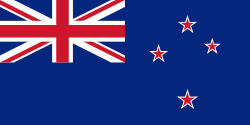Waimakariri District (Waimakariri District)
The district was established on 1 April 1989 following the merger of Rangiora District and Eyre County. The district covers 2217.12 km2, and is home to people. Rangiora is the district seat and largest town, with other major towns including Kaiapoi, Oxford, Pegasus and Woodend.
The current district mayor is Dan Gordon, who was elected in the 2019 local body elections.
The Waimakariri District lies to the north of the Waimakariri River in North Canterbury. The major urban areas are Rangiora and Kaiapoi, which are respectively about 30 and 20 minutes travelling time by car from the centre of Christchurch City.
There are other urban settlements including Woodend and Oxford, as well as a number of village and beach settlements.
The District occupies some 225,000 hectares, and extends from Pegasus Bay in the east to the Puketeraki Range in the west. It is bounded to the north by the Hurunui District.
Map - Waimakariri District (Waimakariri District)
Map
Country - New_Zealand
 |
 |
| Flag of New Zealand | |
The islands of New Zealand were the last large habitable land to be settled by humans. Between about 1280 and 1350, Polynesians began to settle in the islands and then developed a distinctive Māori culture. In 1642, the Dutch explorer Abel Tasman became the first European to sight and record New Zealand. In 1840, representatives of the United Kingdom and Māori chiefs signed the Treaty of Waitangi, which in its English version declared British sovereignty over the islands. In 1841, New Zealand became a colony within the British Empire. Subsequently, a series of conflicts between the colonial government and Māori tribes resulted in the alienation and confiscation of large amounts of Māori land. New Zealand became a dominion in 1907; it gained full statutory independence in 1947, retaining the monarch as head of state. Today, the majority of New Zealand's population of 5.1 million is of European descent; the indigenous Māori are the largest minority, followed by Asians and Pacific Islanders. Reflecting this, New Zealand's culture is mainly derived from Māori and early British settlers, with recent broadening of culture arising from increased immigration. The official languages are English, Māori, and New Zealand Sign Language, with the local dialect of English being dominant.
Currency / Language
| ISO | Currency | Symbol | Significant figures |
|---|---|---|---|
| NZD | New Zealand dollar | $ | 2 |
| ISO | Language |
|---|---|
| EN | English language |















